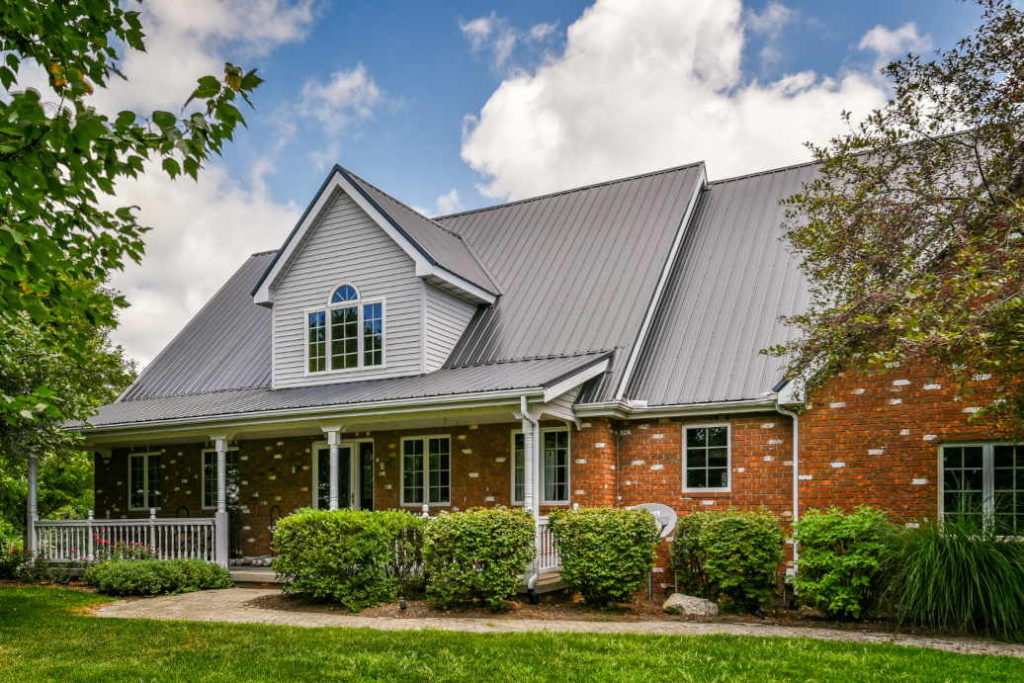Metal roofing has become an increasingly popular choice for homeowners and businesses alike. Known for its durability, energy efficiency, and aesthetic appeal, metal roofing can be a smart investment. However, with various types of metal roofs available, it’s important to understand the differences between them to make an informed decision. This guide will walk you through the most common types of metal roofs and their unique benefits.
1. Standing Seam Metal Roofs
Standing seam metal roofs are one of the most popular and recognizable types of metal roofing. They feature vertical panels with seams that rise above the flat surface of the roof. These seams, also known as ribs, provide extra strength and a sleek, modern appearance.
Benefits:
- Weather Resistance: The raised seams make it difficult for water to penetrate, providing excellent weatherproofing.
- Durability: Standing seam roofs are typically made from high-quality materials like steel or aluminum, which can last for 50 years or more.
- Low Maintenance: With fewer joints and fasteners exposed to the elements, these roofs require minimal maintenance.
2. Metal Shingles
For homeowners who prefer the look of traditional shingles but want the benefits of metal roofing, metal shingles are an excellent option. These shingles can mimic the appearance of asphalt, wood, slate, or even clay tiles, offering both aesthetic flexibility and durability.
Benefits:
- Versatility: Metal shingles are available in a variety of colors and styles, making it easy to match your home’s design.
- Longevity: Like other metal roofing options, metal shingles are highly durable and can last for several decades.
- Energy Efficiency: Reflective coatings can be applied to metal shingles to reduce heat absorption, lowering cooling costs.
3. Corrugated Metal Roofs
Corrugated metal roofs are characterized by their wavy or ribbed pattern. This type of metal roofing is often associated with agricultural or industrial buildings, but it has also found a place in residential applications, particularly for those seeking a rustic or modern-industrial look.
Benefits:
- Affordability: Corrugated metal roofing is one of the most cost-effective metal roofing options available.
- Strength: The corrugated design adds structural strength, making it a good choice for areas with heavy snowfall or strong winds.
- Lightweight: This type of roofing is lightweight, which can reduce the strain on the building’s structure.
4. Metal Tiles
Metal tiles offer the aesthetic appeal of traditional tile roofing but with the added benefits of metal. These tiles can be made to look like Spanish, Mediterranean, or even slate tiles, offering a high-end appearance with superior durability.
Benefits:
- Durability: Metal tiles are resistant to cracking, warping, and weather damage, ensuring a long lifespan.
- Lightweight: Compared to traditional tile roofing, metal tiles are much lighter, which can be an advantage during installation.
- Fire Resistance: Metal tiles provide excellent fire resistance, making them a safer option for homes in wildfire-prone areas.
5. Aluminum Roofing
Aluminum is a popular choice for coastal regions due to its resistance to corrosion. Unlike steel, aluminum doesn’t rust, making it an ideal material for areas with high humidity or saltwater exposure.
Benefits:
- Corrosion Resistance: Aluminum’s natural resistance to corrosion makes it a long-lasting option for coastal homes.
- Lightweight: Aluminum roofing is easy to install due to its lightweight nature.
- Energy Efficiency: Aluminum reflects heat efficiently, reducing cooling costs in warm climates.
6. Steel Roofing
Steel is one of the most common materials used in metal roofing. It is typically coated with a layer of zinc (galvanized steel) or aluminum (Galvalume steel) to prevent rusting and extend its lifespan.
Benefits:
- Strength: Steel is a highly durable material that can withstand harsh weather conditions, including hail and high winds.
- Affordability: Steel roofing is generally more affordable than other types of metal roofing, making it a cost-effective choice.
- Recyclable: Steel is 100% recyclable, making it an environmentally friendly option.
Choosing the right type of metal roof depends on your specific needs, including your budget, aesthetic preferences, and local climate. Whether you opt for the sleek look of standing seam panels, the traditional charm of metal shingles, or the cost-effective strength of corrugated metal, a metal roof can provide long-lasting protection and beauty for your home or business.
When considering a metal roof, it’s essential to consult with a professional roofing contractor to discuss the best options for your situation. With the right choice, you can enjoy the benefits of a durable, energy-efficient, and visually appealing roof for decades to come.



